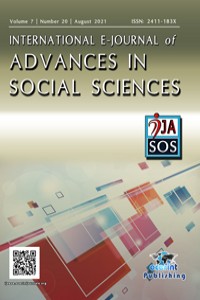Abstract
Bunga terung is a symbol synonymous with the Iban ethnic group in Borneo. This study is aimed to study the significance of bunga terung based on Ferdinand de Saussure’s Linguistic Unit comprising of Sign, Signified and Signifier. In Borneo, the bunga terung is worn by Iban men who have attained puberty to signify entry into adulthood. There are varying practices on the sequence of application of the bunga terung between the Iban of Sarawak and Kalimantan. An interesting observation regarding the sequence is the time the bunga terung is received. In Sarawak, the isi ginti (fish hook) tattoo is worn first – pre-puberty, followed by the bunga terung, and the pantang rekung leher (neck tattoo) before other tattoos for the back and the legs. In Kalimantan, the bunga terung is not worn if the Iban male has not gone berjalai. This study discusses two findings; the significance of the bunga terung; and the sequence of its application on the Iban men from Sarawak.
References
- Ganjing, A. A. (1998). Basic Iban design : an introduction. Dewan Bahasa dan Pustaka.
- Gilbert, S. (2001). The Tattoo History Source Book. Juno Books.
- Haddon, A. C. (1901). Head-Hunters: Black, White and Brown (Classic Reprint) (2018th ed.). Forgotten Books.
- Hambly, W. D. (2009). The History of Tattooing. Dover Publications.
- Hay, M. (2017). Using Ink to Channel Heritage. Retrieved September 20, 2009, from https://explorepartsunknown.com/borneo/using-ink-to-channel-heritage/
- Jeroen Franken and Sven Torfinn. (1998). Pantang Iban. Typography & Other Serious Matter.
- Jumpo, S. (2013). Deconstruction of the Bunga Terung. Retrieved from https://dayakimpressions.wordpress.com/2013/01/02/deconstruction-of-the-bunga-terung/
- Krutak, L. (2007). The Tattooing Arts of Tribal Women. Bennett & Bloom.
- Krutak, L. (2013). Lars’ Tattoo. Retrieved September 29, 2019, from https://www.larskrutak.com/lars-tattoos/
- Lars Krutak and Aaron Deter-Wolf. (2017). Ancient Ink: The Archaeology of Tattooing. University of Washington Pres. Saussure, F. De. (1959). Course in General Linguistics (C. B. and A. Sechehaye, Ed.). Philosophical LLibrary.
Abstract
References
- Ganjing, A. A. (1998). Basic Iban design : an introduction. Dewan Bahasa dan Pustaka.
- Gilbert, S. (2001). The Tattoo History Source Book. Juno Books.
- Haddon, A. C. (1901). Head-Hunters: Black, White and Brown (Classic Reprint) (2018th ed.). Forgotten Books.
- Hambly, W. D. (2009). The History of Tattooing. Dover Publications.
- Hay, M. (2017). Using Ink to Channel Heritage. Retrieved September 20, 2009, from https://explorepartsunknown.com/borneo/using-ink-to-channel-heritage/
- Jeroen Franken and Sven Torfinn. (1998). Pantang Iban. Typography & Other Serious Matter.
- Jumpo, S. (2013). Deconstruction of the Bunga Terung. Retrieved from https://dayakimpressions.wordpress.com/2013/01/02/deconstruction-of-the-bunga-terung/
- Krutak, L. (2007). The Tattooing Arts of Tribal Women. Bennett & Bloom.
- Krutak, L. (2013). Lars’ Tattoo. Retrieved September 29, 2019, from https://www.larskrutak.com/lars-tattoos/
- Lars Krutak and Aaron Deter-Wolf. (2017). Ancient Ink: The Archaeology of Tattooing. University of Washington Pres. Saussure, F. De. (1959). Course in General Linguistics (C. B. and A. Sechehaye, Ed.). Philosophical LLibrary.
Details
| Primary Language | English |
|---|---|
| Journal Section | Research Article |
| Authors | |
| Publication Date | September 6, 2021 |
| Submission Date | July 3, 2021 |
| Published in Issue | Year 2021 Volume: 7 Issue: 20 |
Contact: ijasosjournal@hotmail.com
The IJASOS Journal's site and its metadata are licensed under CC BY
Published and Sponsored by OCERINT International © 2015- 2025

